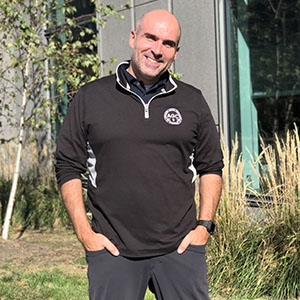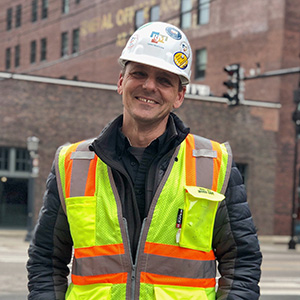Robyn Thomas
Recent news in the construction industry has run hot and cold. One minute headlines announce that, according to Indeed, construction-related jobs make up four of the top 10 jobs in America for 2018, nearly outpacing the tech industry. The next, the headlines warn that while the construction industry is booming, there is a major shortage on skilled workers, an issue that promises to hinder project timelines and overall industry growth.
While these are issues that affect the nation as a whole, each state must address them on its own. In Minnesota, a handful of individuals are starting to do this by digging into the data, trying to get a better understanding of Minnesota’s labor projections. The question on construction professionals’ minds is this: How do we accurately predict which trades and skills the market will need in the next five years, and consequently, how do we ensure that our trade schools are training enough professionals to satisfy those market needs in Minnesota? If we knew how to better read the data and work with trade schools, then we could better address the impending issues that threaten the success of the construction industry in our state.
Robyn Thomas is one of those aforementioned data-mining individuals. Earning her BAS in Construction Management through the U of M’s College of Continuing and Professional Studies (CCAPS) while also serving in the MN National Guard, Thomas chose to complete a directed study project as the culmination of her program studies. She works directly with John O’Phelan, Construction Hiring Connection Program Manager for Ramsey County, and Jill Johnson, a consultant hired by the Associated General Contractors of America (AGC). O’Phelan and Johnson have received a grant to research training efforts in Minnesota.
We sat down with Thomas to learn more about her research project and what it means for Minnesotans.
CCAPS: How did you get involved in this research project?
RT: Peter Hilger [faculty director for the Construction Management program] offered this directed study option to me because I didn’t really need an internship. I’ve had years’ worth of experience on job sites. The directed study opportunity came about because John O’Phalen came to Peter wanting a student’s help on this grant-funded research project, and I fit the bill. So far for the directed study, we’ve sent out a survey to all of the Minnesota State Colleges and Universities. We’ve looked at their trade programs and have talked to instructors, asking them questions about enrollment, graduation rates, and trades that students are choosing to enter.
CCAPS: Now that you’re collecting the data from the surveys, what comes next?
RT: We’ve compiled the information from the surveys, and we’re refining it now. I’m busy entering the data. We’re also looking at several websites that these schools have to report their information to, checking their status and what they’re reporting. It’s the litmus test of what the instructors are telling us versus what has been reported. None of what we’re studying is 2018 data, by the way.
There’s also Minnesota DEED (Minnesota Department of Employment and Economic Development). We’re looking at what industries they’ve got, what they’re tracking, and what their projections are. The finished product is going to give all of the colleges and unions an idea of where they need to put their emphasis in terms of what markets are growing.
CCAPS: Is there anything else that you’re doing as part of the study?
RT: One of the other things we want to do is take a closer look at a few buildings around the Twin Cities, researching what it cost to build and what the timeframe was to build it. Say, for example, the IDS Center. After I pull research from the building’s history, we’ll then ask ourselves what would that cost and how long would it take to build today. I will be drawing up estimates for a couple of these buildings just to see what that looks like, the comparison between then and now. It’s a lot of data mining at this point.
CCAPS: What’s the goal of this project?
RT: This is the kind of work that John and Jill are looking at compiling on a yearly basis, but right now they’re trying to come up with a five-year projection, then keep it a rolling five-year projection of the construction markets so that it’s updated. We’re just focused on the state of Minnesota. The state of Wisconsin has a program very similar to what we’re trying to implement. There are programs like this out there that are functioning for different states, but Minnesota needs its own thing. We’re just figuring out what that is. No one has ever done this work or these projections in Minnesota.
The reason this study matters is that we have a deficit of trained workers for the construction industry and the gap is only growing larger. This study will allow schools to focus on the trades that are needed for today's construction growth and forecast for the future.
CCAPS: How long will you be working on this?
RT: I won’t see the finished product, but the team is aiming for midsummer 2018 to have something that’s ready to talk about and present. By then I will no longer be a student: I’ll have graduated. They also want to go talk to the unions because a lot of these programs that they’re serving feed into unions (electricians, plumbers, pipe fitters, HVAC).
Personally, being out in the trades and seeing this, I believe the schools need to diversify. Probably 50 percent of the schools have some sort of welding program, but how many welders do you really need? Most of the steel that we use today in industrial, or commercial construction, is bolted. The only time you’re doing welding is at a factory somewhere where you’re fabricating something. Things are coming out prefabricated now. So things are changing. We’re also thinking about upcoming technologies and how they're changing and evolving because, as it’s becoming more prefabricated with the advent of BIM (Building Information Modeling), less is needed to fabricate it in the field.
CCAPS: Why does this study matter for the state of Minnesota?
RT: One of the things that general contractors know is that Baby Boomers are retiring now. Economy is finally good. But because of the Recession, people weren’t going into the trades because so many people were holding their positions until the economy became better. So you have this age gap, where you have all the Boomers about to retire and then you’ve got the next batch probably a decade behind. So you have this interim position where you’re going to need a ton of people. And to be able to accurately predict that and recruit for it—that’s what they’re trying to do now. I don’t know how successful they’re going to be but everybody out there in the construction industry knows that we have a shortage. If we don’t do something about it, contractors won’t be able to pick up more work because there won’t be enough workers to do it. It’s similar to when you had the Vikings stadium being built, the bridge over the St. Croix, and the State Capitol restoration—all of which caused a labor shortage because everyone was already employed.
So the reason this study matters is that we have a deficit of trained workers for the construction industry and the gap is only growing larger. This study will allow schools to focus on the trades that are needed for today's construction growth and forecast for the future.











